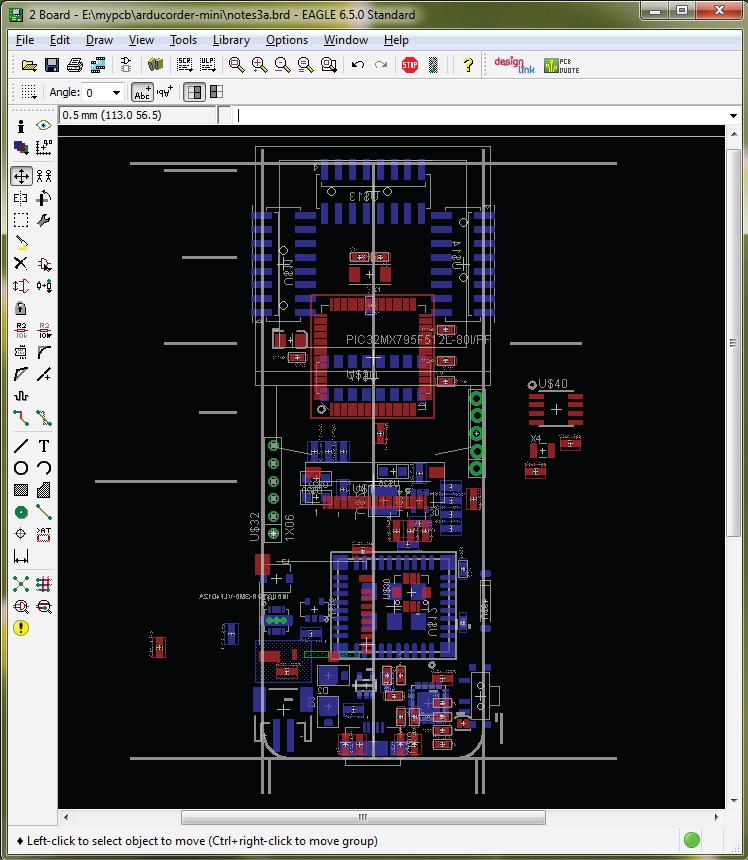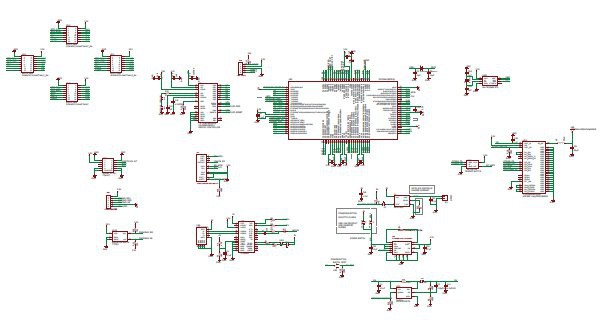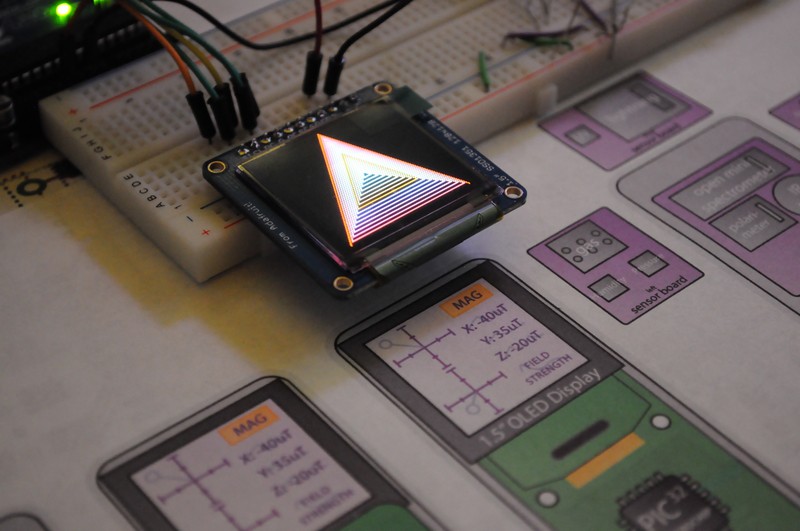A quick update after a weekend of marathon schematic creation and board design...
Schematic and Initial Board Layout

I've completed the first revision of the schematic. The device is using a PIC32MX795F512L microcontroller, which should be plenty of horsepower for the design, have plenty of space for the OLED framebuffer, and the I/Os are entirely mapped to the ChipKit Max32 design. This mini open source science tricorder should be fully programmable using the Arduino-compatible ChipKit MPIDE for beginners, while having an ICD3 header for the advanced power users who want to get close to the bare metal. Here I've also used the 128x128 OLED display, but there should be plenty of breathing room to expand to the 160x128 OLED in the next revision by expanding the board out a few millimeters, with minimal modifications.
I might have gone a little overboard with the sensor connectors, and browsed thousands of connectors on Digikey and Mouser looking for something perfect -- a right angle board-to-board connector that is low-profile, reasonably easy to prototype with, and provides solid mechanical connections. We'll see how these work out!
The sensor headers are also mirrored copies of each other, so that any sensor board should be able to plug into any location -- front, bottom, or either side (although only the bottom slot will have extra height clearance). I erred on exposing a variety of interfaces on the sensor headers to ensure that there'd be enough connectivity options in the future, including SPI, I2C, UART, 3 Analog, and 4 Digital I/O pins. Keeping this interchangeable/mirrored footprint is going to make routing a nightmare, especially on this 2 layer board, but I'm hopeful that it'll be solvable.
Now that most of the parts seem to fit, it's on to the routing!

Prototyping and Evaluation Components
Many of the parts and evaluation board have been trickling in for the new design. In particular, I'm very impressed with the OLED displays -- the colours are bright and vivid, there is a near 180° viewing angle, and I think it'll all look very sharp. They're a bit challenging to photograph well, but absolutely beautiful to the eye in person.

Just a quick update for tonight, thanks for reading, and stay tuned!
 peter jansen
peter jansen
Discussions
Become a Hackaday.io Member
Create an account to leave a comment. Already have an account? Log In.
Are you sure? yes | no